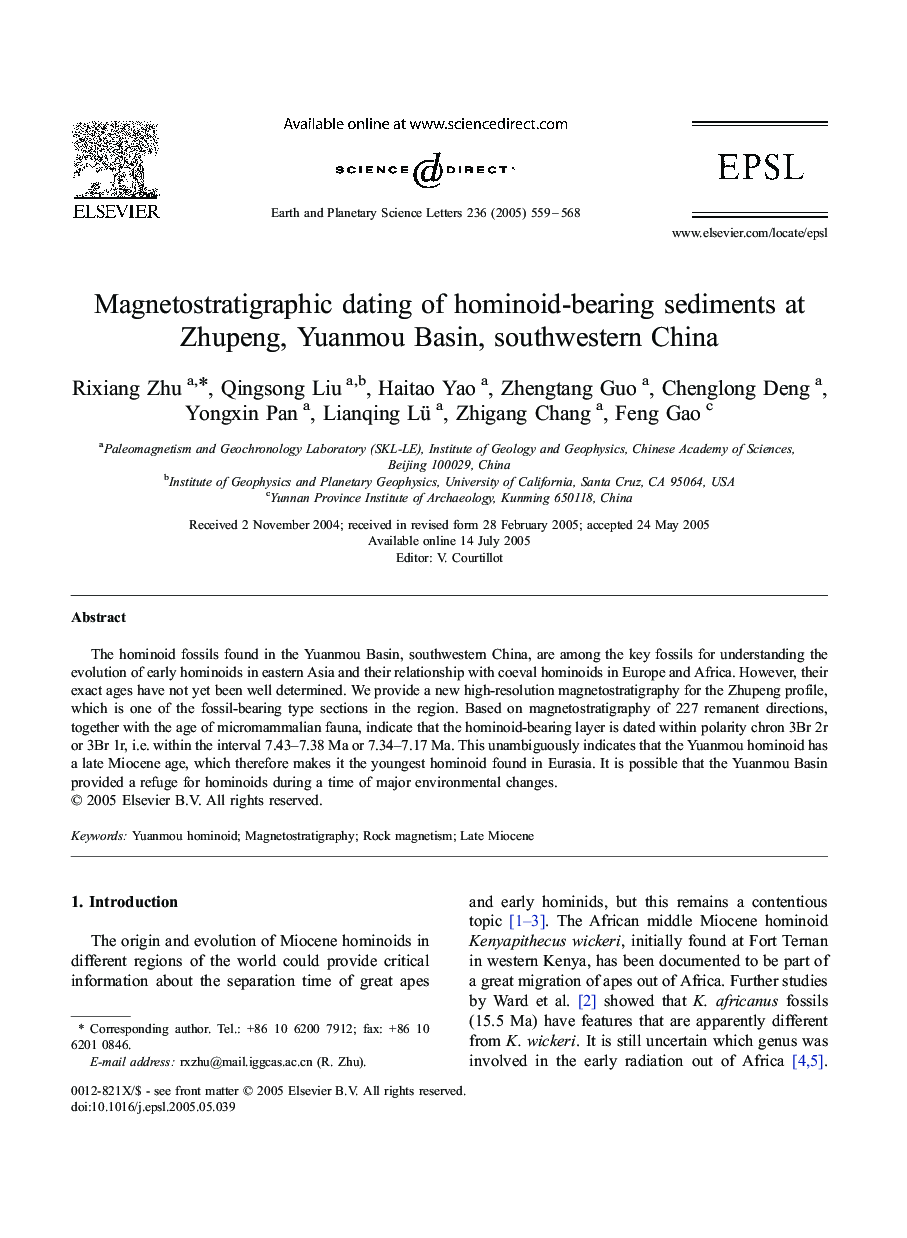| Article ID | Journal | Published Year | Pages | File Type |
|---|---|---|---|---|
| 9522655 | Earth and Planetary Science Letters | 2005 | 10 Pages |
Abstract
The hominoid fossils found in the Yuanmou Basin, southwestern China, are among the key fossils for understanding the evolution of early hominoids in eastern Asia and their relationship with coeval hominoids in Europe and Africa. However, their exact ages have not yet been well determined. We provide a new high-resolution magnetostratigraphy for the Zhupeng profile, which is one of the fossil-bearing type sections in the region. Based on magnetostratigraphy of 227 remanent directions, together with the age of micromammalian fauna, indicate that the hominoid-bearing layer is dated within polarity chron 3Br 2r or 3Br 1r, i.e. within the interval 7.43-7.38 Ma or 7.34-7.17 Ma. This unambiguously indicates that the Yuanmou hominoid has a late Miocene age, which therefore makes it the youngest hominoid found in Eurasia. It is possible that the Yuanmou Basin provided a refuge for hominoids during a time of major environmental changes.
Related Topics
Physical Sciences and Engineering
Earth and Planetary Sciences
Earth and Planetary Sciences (General)
Authors
Rixiang Zhu, Qingsong Liu, Haitao Yao, Zhengtang Guo, Chenglong Deng, Yongxin Pan, Lianqing Lü, Zhigang Chang, Feng Gao,
